
French postcard in the Les Vedettes de Cinéma serie by A.N., Paris, no. 194. Photo: Fox Film.
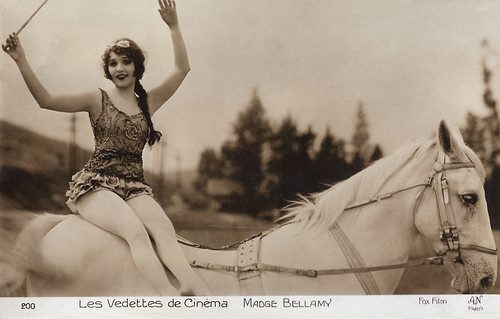
French postcard in the Les Vedettes de Cinéma serie by A.N., Paris, no. 200. Photo: Fox Film.

Italian postcard by Fotominio / A. Catini, Terni. Photo: Fox Film.
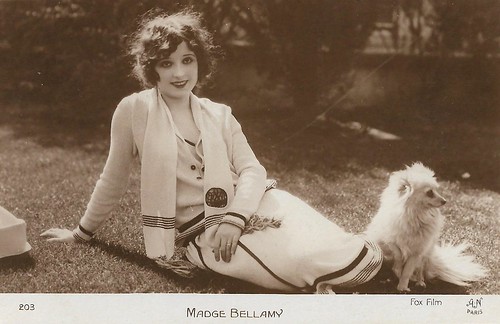
French postcard by A.N., Paris, no. 203. Photo: Fox Film.

Italian postcard by G.B. Falci Ed. for Cioccolato Talmone al Latte Unica. Photo: Fox.
The most beautiful girl on Broadway
Madge Bellamy was born Margaret Derden Philpott in Hillsboro, Texas, in 1899. She was the daughter of William Bledsoe Philpott, a professor of English, and Annie Margaret Derden. She was the cousin of the actor Tom Forman.
Raised in Texas, she lived in San Antonio until she was 6 years old. Then the family moved to Brownwood, also in Texas, where her father was teaching at Texas A&M University. Madge took dancing lessons and soon began to aspire to become a stage performer. She made her stage debut dancing in a local production of Aida, at the age of 9. When she turned 10, the Philpotts went to live in Denver, Colorado.
Shortly before she was to graduate from high school, Bellamy left home for New York City. She immediately found work on Broadway as a dancer. After appearing in the chorus of the Earl Carroll show The Love Mill (1917), she decided to try acting. In 1918, she was the protagonist of Pollyanna, a production that also took her on tour. Critics took notice and Madge was billed 'The Most Beautiful Girl On Broadway'.
In 1919, Madge met and married Carlos Bellamy in Colorado, but they divorced when she decided to leave Colorado to pursue her acting career. Her big break came when she replaced Helen Hayes in the Broadway production of Dear Brutus (1919) opposite William Gillette. Bellamy also appeared in the touring production of Dear Brutus.
While appearing in Dear Brutus, Bellamy was cast in a supporting role in her first film The Riddle: Woman (Edward José, 1920), starring Geraldine Farrar. In November 1920, she signed an exclusive contract with Thomas H. Ince, who wanted her for his new production company Triangle. Her first film for Triangle was The Cup of Life (Rowland V. Lee, 1921), starring Hobart Bosworth.
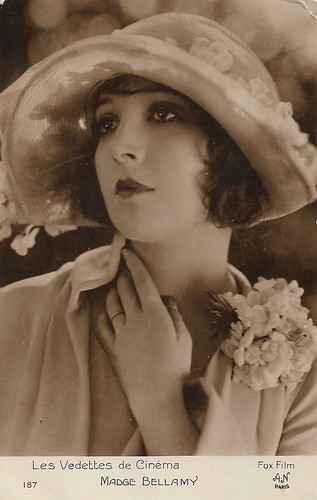
French postcard in the Les Vedettes de Cinéma series by A.N., Paris, no. 187. Photo: Fox Film.
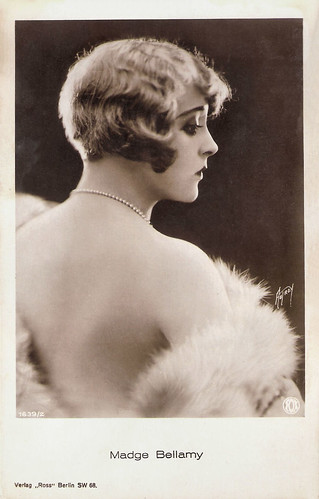
German postcard by Ross Verlag, no. 1639/2, 1927-1928. Photo: Max Munn Autrey / Fox.

German postcard by Ross Verlag, no. 3192/2, 1928-1929. Photo: Max Munn Autrey / Fox Film.

German postcard by Ross Verlag, no. 3839/2, 1928-1929. Photo: Max Munn Autrey / Fox Film.
Arrested for having shot three times at her former lover
Madge Bellamy's breakthrough came in Lorna Doone (Maurice Tourneur, 1922) - hence she was 'the exquisite Madge'. For Triangle, she appeared in several melodramas. When her contract with Ince ended she moved over to Fox, where she acted for John Ford in his first Western The Iron Horse (John Ford, 1924) with George O'Brien, and in the comedy Lightnin' (John Ford, 1925), with Jay Hunt.
As Bellamy favoured light comedy only, she got into trouble with the studios, as she refused a role in the mega-epic Ben-Hur (Fred Niblo, 1925), starring Ramon Novarro. Because of her off-set temperament, she was nicknamed 'Miss Firecracker' in the fan magazines. Her 1928 marriage to stockbroker Logan Metcalf lasted only four days. Metcalf filed for divorce claiming that while the two were on honeymoon, Bellamy had refused to speak to him because of his fondness for eating ham and eggs, which she considered 'plebeian'. Despite her poor behaviour off-set, she was still a fairly popular performer and was named an 'American Beauty' by the Hollywood Association of Foreign Correspondents
Madge did not encounter problems when switching from silent to sound. In 1928, Bellamy was cast in Fox's first part-talking film, Mother Knows Best (John G. Blystone, 1928), fictionalising the life of Vaudeville star Elsie Janis. However, in 1929, she left Fox. She walked out on her contract after refusing to star in the planned film adaptation of The Trial of Mary Dugan, a 1927 hit Broadway play that the studio had bought especially for Bellamy. The role was later given to Norma Shearer and The Trial of Mary Dugan (Bayard Veiller, 1929) became one of Shearer's biggest early successes. Bellamy tried to find work as a freelance actress but did not work until 1932. Then she returned to the set to play in B-films for Poverty Row studios. Her best-known film from this period is White Zombie (Victor Halperin, 1932) starring Bela Lugosi. The film got negative reviews but was a great financial success for an independent film at the time. Today, White Zombie is a cult favourite and is described as the first feature-length zombie film and as the archetype and model of all zombie movies.
Despite the relative success of White Zombie, the film career of Madge Bellamy went nowhere. By the mid-1930s she was reduced to bit parts and walk-on parts, and by the early 1940s, her career had virtually ended. In 1943, Bellamy was arrested for having shot three times at her former lover, wealthy lumber executive Albert Stanwood Murphy, after he deserted her to marry another woman. She was given a suspended six-month sentence and one year of probation. Bellamy made her last screen appearance in Northwest Trail (Derwin Abraham, 1945). She returned to the stage in 1946 in the Los Angeles production of 'Holiday Lady', after which she retired.
She had some holdings in real estate and owned a retail shop in which she worked to support herself. In her spare time, she wrote screenplays and novels which were never purchased. In the 1980s, Madge Bellamy was rediscovered by film historians and silent film fans. She sold the retail shop and lived in relative financial comfort for the rest of her life in Ontario, California. She died in 1990 in a hospital in Upland, California, at the age of 90. Her biography, 'A Darling of the Twenties', was published shortly after her death.

Austrian postcard by Iris-Verlag, no. 480-2. Photo: Fox Film.
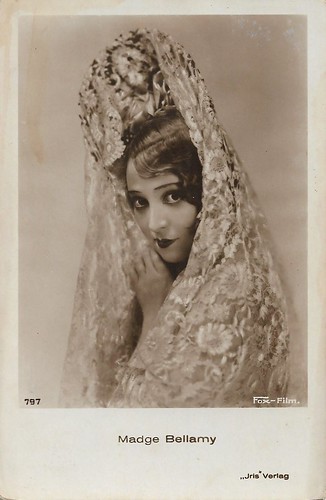
Austrian postcard by Iris Verlag, no. 797. Photo: Fox Film.

Spanish postcard by Editorial Fotografica, Barcelona, no. A-36. Madge Bellamy in Summer Bachelors (Allan Dwan, 1926). Collection: Marlene Pilaete.
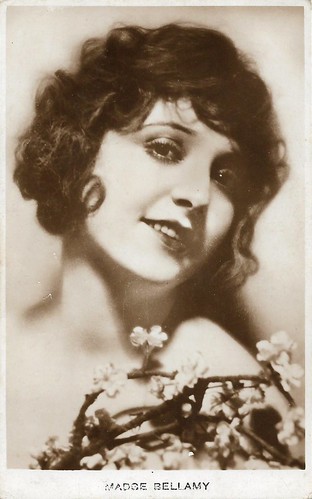
British Real Photograph postcard.
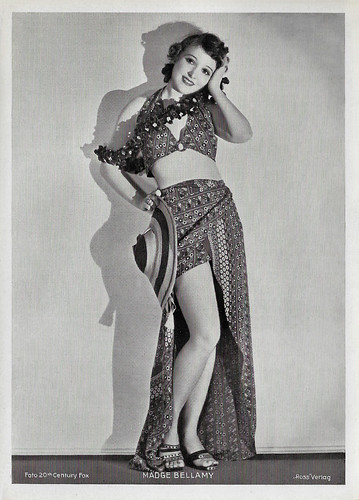
Big German card by Ross Verlag. Photo: 20th Century Fox.
Sources: Tony Fontana (IMDb), Golden Silents, Wikipedia (English and Italian), and IMDb.
This post was last updated on 19 July 2023.
No comments:
Post a Comment